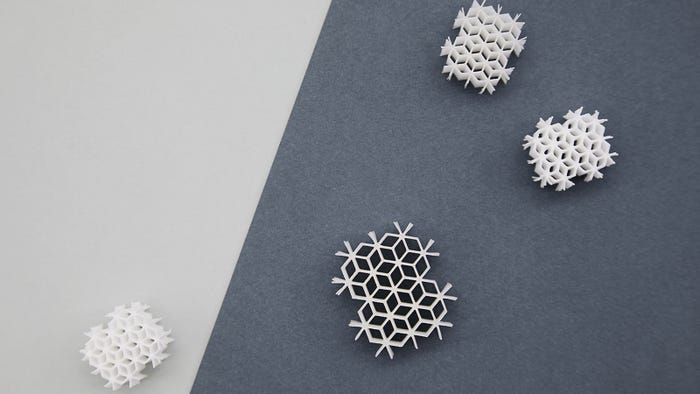AI Is My Co-pilot in Advanced Manufacturing
Fabian Alefeld of EOS explains how artificial intelligence (AI) is becoming a must-have tool in advanced manufacturing.
June 24, 2024

At a Glance
- One simulation application uses machine learning and AI to identify part areas prone to overheating and generate solutions.
- Developing materials for AM involves a lot of trail and error, which AI can reduce dramatically.
- Google's AlphaFold could be a game changer in AM material development.
There has been a lot of chatter — a lot — about how artificial intelligence (AI) will transform seemingly every aspect of manufacturing. That includes additive manufacturing (AM), aka 3D printing, and I spoke with someone who is steeped in the adoption of AI within that industry.

Fabian Alefeld is the global senior manager of Additive Minds Academy and Business Development at AM technology company EOS, and he is clear-eyed when it comes to the current state of AI as well as its potential. Right now, he views AI as a “co-pilot, not a true decision maker.” In the future, though, all bets are off.
Predicting overheating in parts.
Alefeld cited one current application developed by EOS partner company 1000 Kelvin that uses machine learning and AI to simulate the AM process and identify areas of the part prone to overheating and generate solutions. “It gives me advice on how to alleviate that potential problem, either through a redesign or by adjusting process parameters, such as reducing laser power in those areas and preventing overheating before going into the build,” explains Alefeld.
Similarly, EOS applies what it calls Smart Fusion software in metal AM, which the company describes as real-time heat management that reduces or eliminates support structures. “We use a closed-loop system by which near-infrared optical tomography cameras detect if there is any overheating on a layer. If so, we can adjust the laser power on the next layer precisely at that spot and correct the overheating. For our metal technology, that means reduced or eliminated support structures, faster print times, and better material properties,” says Alefeld.
A solution to skilled labor shortage.
There are countless more ways AI can help accelerate productivity and time-to-market while reducing costs. It can even play a tremendous role in mitigating the skilled labor shortage that plagues manufacturing.

Complex 3D-printed parts. Image courtesy of EOS GmbH.
Consider computer-aided design (CAD), says Alefeld. “It’s complex, difficult to learn. It takes hours to design certain geometries, and there’s a lot of trial and error. There are certain restrictions when it comes to angles and part orientation within a build,” explains Alefeld. All of that can be supported by AI, he adds, offering the example of ChatGPT producing a picture based simply on verbal prompts. It’s primitive right now, but it’s inevitable that the “Autodesks of the world will start to implement these types of prompts into their tools.” Again, a valuable co-pilot, but we are at a very early stage in the development of AI, and the potential is quite literally mind boggling. One area that fascinates Alefeld is material development, where AM still struggles. Google’s AlphaFold AI system could be a game changer, even if it’s not focused on materials, per se.
Accelerating drug development.
“AlphaFold uses machine learning and AI to predict the way that protein structures fold, and there are millions upon millions of possibilities. What’s interesting about this is that it can predict how new pharmaceutical formulations will function, positively or negatively. That can end up saving billions of dollars in clinical trials,” says Alefeld. Why not use this technology in material science applications, he wonders.
Developing AM materials and additives is a costly and lengthy process, and quite often you can be pretty far down the road before you realize that it just won’t work. “Polypropylene, for example, is difficult to print, especially with laser-based AM, because you need to put a lot of energy into that material, which changes its structure,” explains Alefeld. “Typically, we will tweak the formulation while trying to retain the same properties in the final part. That involves a lot of trail and error, which AI can reduce dramatically.
Yes, it’s a bit of a moonshot right now, acknowledges Alefeld, but as AI continues to evolve at warp speed, it’s certainly not out of reach.
EOS is exhibiting at Rapid + TCT, North America's largest additive manufacturing and industrial 3D-printing event, this week in Los Angeles. Visit the company at booth 2639 at the Los Angeles Convention Center from June 25 to 27.
About the Author(s)
You May Also Like




